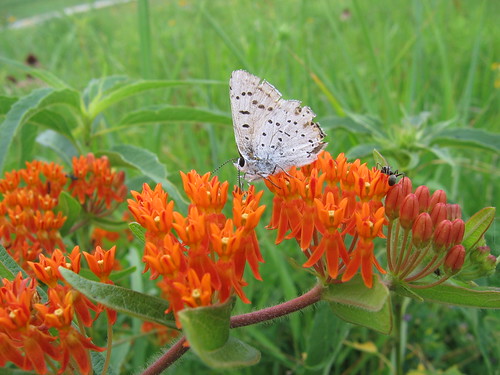 There was plenty of competition for this field on our place
There was plenty of competition for this field on our placeA hot discussion on our site, “
Cut throat neighbors,” delves into a young farmer’s problem in fending off aggressive competition for land he’s renting: “Every year neighboring farmers contact my landlords and offer astronomical prices…to rent their land,” he says.
This must be common occurrence, given the big response this farmer gets. And some folks are not very sympathetic.
"You are naive to think you are entitled, deserve privilege, or for some reason think the market is closed because you rented a farm,” says one respondent.
Another says: “Farming, especially renting, is dog eat dog, always has been, always will be.”
About five years ago, the long-time operator of our Nebraska farm went bankrupt. Very soon after I got the news, the phone started ringing. A couple neighbors to our farm, as well as one of the area’s big operators, checked in with me about the availability of the land.
One of the farmers that contacted me was a younger fellow who had just lost some rented ground. He and his wife both worked off the farm, but he had a small parcel of his own and was hoping to stay in the game with a little more land. We set up a meeting to get acquainted. He brought his dad to the meeting, talked about people we both knew, and showed me pictures of his kids. We wound up signing some papers.
He’s kept up his end of the bargain, tending to the all the details—pushing paperwork, keeping up the fences, maintaining the irrigation equipment and CRP, and generally keeping an eye on things. He keeps in touch on a regular basis.
When commodity prices went through the roof a couple years ago, it was tempting to raise the rent. I decided against it, because the guy had gone beyond the call of duty a couple times, and we seemed to be about even.
I guess what I’m saying is that we could be getting more money for that farm, but when is enough enough? And aren't there other important pieces in a land-rent relationship?
According to the farmers participating in the “cut throat neighbors” discussion, here are some things you should consider as you rent land and deal with neighborhood land sharks:
•
Out-hustle the competition. “We all have to prove ourselves, and even without other farmers calling your landowners, you are still in a silent competition with area farmers,” said one.
•
Go on the offensive. One farmer says he recently threw a big barn party for his landlords and other neighbors, some of whom might be retiring soon.
•
Take care of business. Says one landlord: “All my ground is irrigated so taking care of equipment is at the top of my list.” Others mention things like shoveling driveways and mowing ditches.
•
Be a good communicator. Landowners like to hear about how the crops are doing and what you’re doing to improve the farm. One fellow takes his landowners on tours of the cropland, showing what improvements he’s made and how the crops are faring. A farm manager says he rents land to a smaller producer over a big shooter, because the little guy answers his phone calls and e-mails promptly.
•
Build a good reputation. ”Dog eat dog to make a buck has ruined more young farmers than anything as they bid the profit away to be a BTO,” said one farmer. Says a landowner: “I value honesty and integrity far more than getting a few extra dollars.”
•
Try for multi-year leases. One farmer has had good luck working with landlords to bargain extra years for additional improvements to the land. Another fellow, however, recommends one-year leases so that the owner thinks of you as hungry and hustling. “Humility, hard work, and honesty are all you need,” he says.
•
Work with what you have. “I can make a very good living off my acres because sometimes intensifying is better than more and more acres,” says one farmer.
•
Buy your own land. "My advice is save your money and invest in buying your own land, says a farmer. "Buy a little here and there, nothing more than you can afford."


